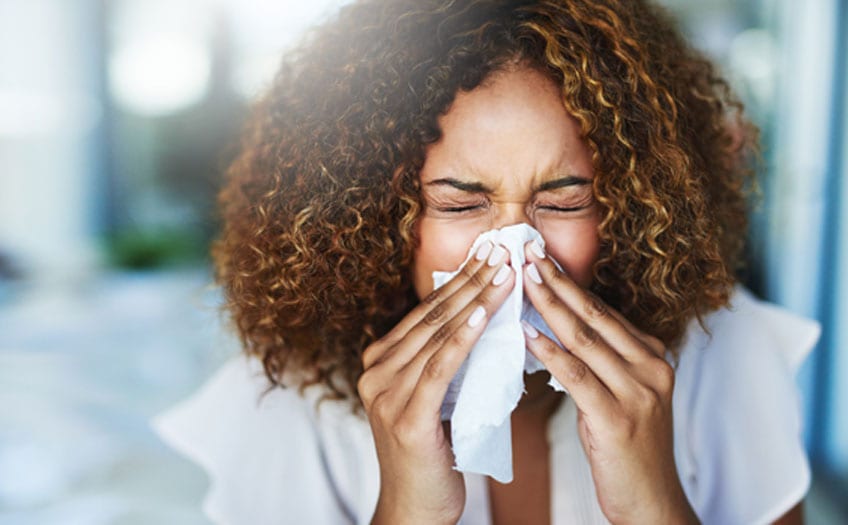According to the American Lung Association, 41.9 million people in the U.S. had at one point received an asthma diagnosis. And the rate appears to be on the rise. Since 1999, this number has grown by 43%. The Centers for Disease Control and Prevention (CDC) estimates about 8.4%of U.S. adults have asthma.
Allergies, also known as allergic rhinitis, affect up to 30% of the U.S. population and are rising. According to the Asthma and Allergy Foundation of America, more than 100 million people in the U.S. experience some form of allergy each year. In fact, in the U.S., allergies are the sixth-leading cause of chronic illness.
It is estimated that over half of Americans between the ages of 6 and 59 would test positive to one or more allergens. About one quarter of these people would be allergic to dust mites, ragweed or cockroaches. Surveys suggest that about ten million Americans are allergic to cats. Two million are allergic to insect stings. The American Academy of Allergy, Asthma and Immunology believes allergies are the sixth leading cause of chronic (i.e. long-term) disease.
The problem is not confined to the U.S. It is estimated that between forty and fifty per cent of children in North America, Western Europe and Australia have some form of allergy. Why is this a problem if you have asthma? The WHO believes 90 per cent of asthma attacks are triggered by allergic reactions.
An allergy starts with the body’s increased sensitivity to something it perceives as a threat. The immune system overreacts to an allergen that for others is an innocent, unthreatening substance. We don’t know why some people become sensitized to an allergen and others do not, but it is believed that people inherit a tendency for allergies, although not to a specific substance.
Some experts believe the sensitivity is related to a child’s environment and lifestyle. Increasing sales of antibacterial sprays and other cleaning agents means today’s homes are generally cleaner. Children spend more time in the home and less time playing outside in the dirt. Consequently they are less exposed to potential allergens and denied the chance to develop immunity. This is believed to lead to allergic sensitization.
Studies have shown that children in large families or who attend a daycare center are less likely to develop allergies. It has also been found that children who share their home with dogs and cats have less allergic reactions than those raised in a pet free household.
Pollen is a common allergy and asthma trigger. When these tiny particles enter the airways of someone sensitive to their presence proteins on the surface of the pollen and an enzyme also carried by the pollen cause an overreaction. The protein triggers the immune system and the enzyme interacts with the cells of the airways. This inflames the respiratory passages and leads to breathing difficulties.
Understanding this process may lead to new, more effective medications, but what can you do in the meantime? Firstly know the pollen count for your area. However be aware that the pollen count is usually taken the day before it is broadcast. It can be reduced by rain or cool weather, and increased by hot weather or short thunderstorms.
There are some easy preventative actions you can take for each type of allergy. If you have an allergic reaction during yard work and in damp places dispose of anything that smells moldy; if pets start a reaction regularly wash them and their bedding; many allergies will improve if you do not smoke.
Vigilance is the best prescription for a food allergy . Today you can encounter food substances in the most unexpected places. There was a classic school experiment that involved burning a peanut and measuring how much energy it gave out. Now pupils burn an alternative. Some pupils discovered they were allergic to peanuts the hard way as the oils in the nut gave off fumes.
Now there is another food to treat with caution. Sesame seed allergy is one of the fastest growing allergies in the world. And don’t think you’ll only find the seed resting atop a bun. They are used in salad dressings, ethnic foods, baked goods and even soap.
So what can you do if you suspect you are allergic or asthmatic? First, educate yourself about the condition. Experts agree that knowledge is the best prescription.
Do some research. Consult your doctor. They may recommend tests to determine any allergies you have. If an allergy or asthma is identified there are medications, precautions and complementary therapies you can use to control your condition.







Be First to Comment